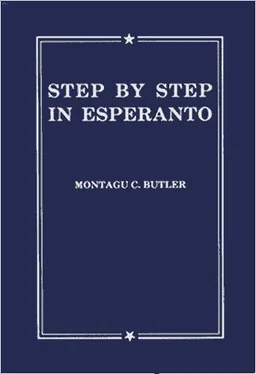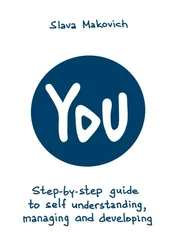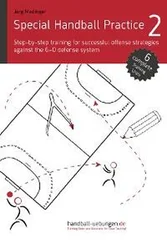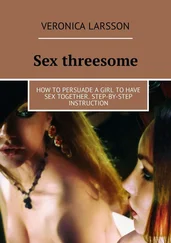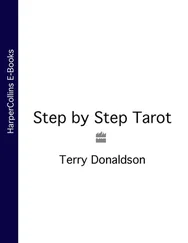Esperanto is one of the most beautiful languages on earth. But even Esperanto may sound hideous if murdered. The standard of some Esperantists is deplorably low, and they seem content to have it so. Even propagandists have been known whose errors make a sensitive listener shudder. You owe it to the language and to yourself to aim higher than this. Esperanto is worthy of your best efforts, your enthusiasm, your affection. Treat it with at least the same respect as that which you would give to any other living language. If the height of your ambition is to write picture-postcards which are ungrammatical and only half-intelligible, you would do Esperanto and also your puzzled correspondents a service by leaving it alone. (This, however, is not intended to discourage correspondence at even an early stage, if supervised.)
It does not follow that because you speak fluently you speak well. Never imagine that you have no more to learn. No, not even when you have passed an examination. [117]
Join your national Esperanto association, and thus support the movement, and keep in touch. Wear the Esperanto star. When you are proficient, correspond with Esperantists in other lands. Join (or found) the local Esperanto group.
Form a class among your friends. If you are able to teach and keep a class, you will be a valuable gain to the movement. But teaching is an art, and a poor teacher can quickly kill any class. In the United States and Canada, you can call upon the AATE for assistance in teaching methods and choosing appropriate textbooks.
Summary of the Esperanto Grammar
(See also paragraph 1108)
(No silent letters)
VOWELS: A, E, I, O, U,sound in Are there three or two?
CONSONANTS: As in English, but C= ts; Ĉ= ch; G=hard g in go; Ĝ=soft g in George; Ĥ= ch in loch; J= y; Ĵ= s in pleasure; Ŝ= sh .
DIPHTHONGS: EJ, AŬ, AJ, OJ,sound in Stay now, my boy .
ACCENT: on the last vowel but one.
Most words are formed from a root (e.g., am, kat) plus a grammatical ending. The root may be modified by one or more affixes.
NOUNS end in O. Amo, love; kato, a cat .
ADJECTIVES end in A. Ama, of love, loving; kata, feline, cattish .
PLURALS end in J. Ama vorto, a loving word; amaj vortoj(pr. ah-my vor-toy ), loving words .
ADVERBS end in E. Ame, lovingly; kate, in a cat-like manner .
COMPARISON: Pli, more; plej, most . Pli ame, more lovingly; plej ame, most lovingly .
INFINITIVE: I. Ami, to love .
IMPERATIVE: U. Amu! love!
PAST TENSE: IS. Mi amis, I loved .
PRESENT TENSE: AS. Mi amas, I love .
FUTURE TENSE: OS. Mi amos, I shall love .
CONDITIONAL: US. Mi amus, I should love .
PREPOSITIONS govern the nominative. Li, he; al li, to him .
THE DIRECT OBJECT of the verb ends in N. Mi amas lin, I love him; li amas min, he loves me . The ending Nmay replace an omitted preposition. Mi iras tieN(or mi iras AL tie), I am going thither (=to there) .
PARTICIPLES, ACTIVE (past, present, future): INT, ANT, ONT.Adjectival forms: Aminta, having loved; amanta, loving; amonta, about to love .
PARTICIPLES, PASSIVE (past, present, future): IT, AT, OT.Adjectival forms: Amita (having been) loved; amata, being loved; amota, about to be loved .
PARTICIPAL NOUNS AND ADVERBS: amanto, one who is loving; amato, one who is loved; amante, while loving; amate, while loved .
Bo= in law
Ĉef= chief, main
Dis= separation
Ek= momentary, sudden
Eks= ex‑, former
Fi= shamefulness
For= away
Fuŝ= bunglingly
Ge= of both sexes
Mal= opposite
Mem= self- (emphatic)
Mis= mis, amiss
Ne= negative
Pra= remote (time)
Re= re‑, back, again
Sin= self- (reflexive)
Ve= of woe
Vic= vice-
Vir= male
Aĉ= disparagement
Ad= (a) action; (b) continuation
Aĵ= thing (concrete idea)
An= (a) member; (b) partisan; (c) inhabitant
Ar= collection
Ĉj= pet-name (masc.)
Ebl= possibility
Ec= quality, abstract idea
Edz= husband
Eg= augmentative
Ej= place
Em= propensity
End= to be (which must be) ‑ed
Er= item, unit
Estr= leader, ruler
Et= diminutive
Foj= time (repetition)
Id= oflspring, young
Ig= make
Iĝ= become
Il= instrument, means
In= feminine
Ind= worthiness
Ing= holder, socket
Ism= “ism,” theory, system
Ist= habitual occupation
Nj= pet-name (feminine)
Obl= multiple
On= fraction
Op= collective
Uj= (a) container; (b) land
Ul= person
Um= indefinite relation
Table of Correlatives (707)
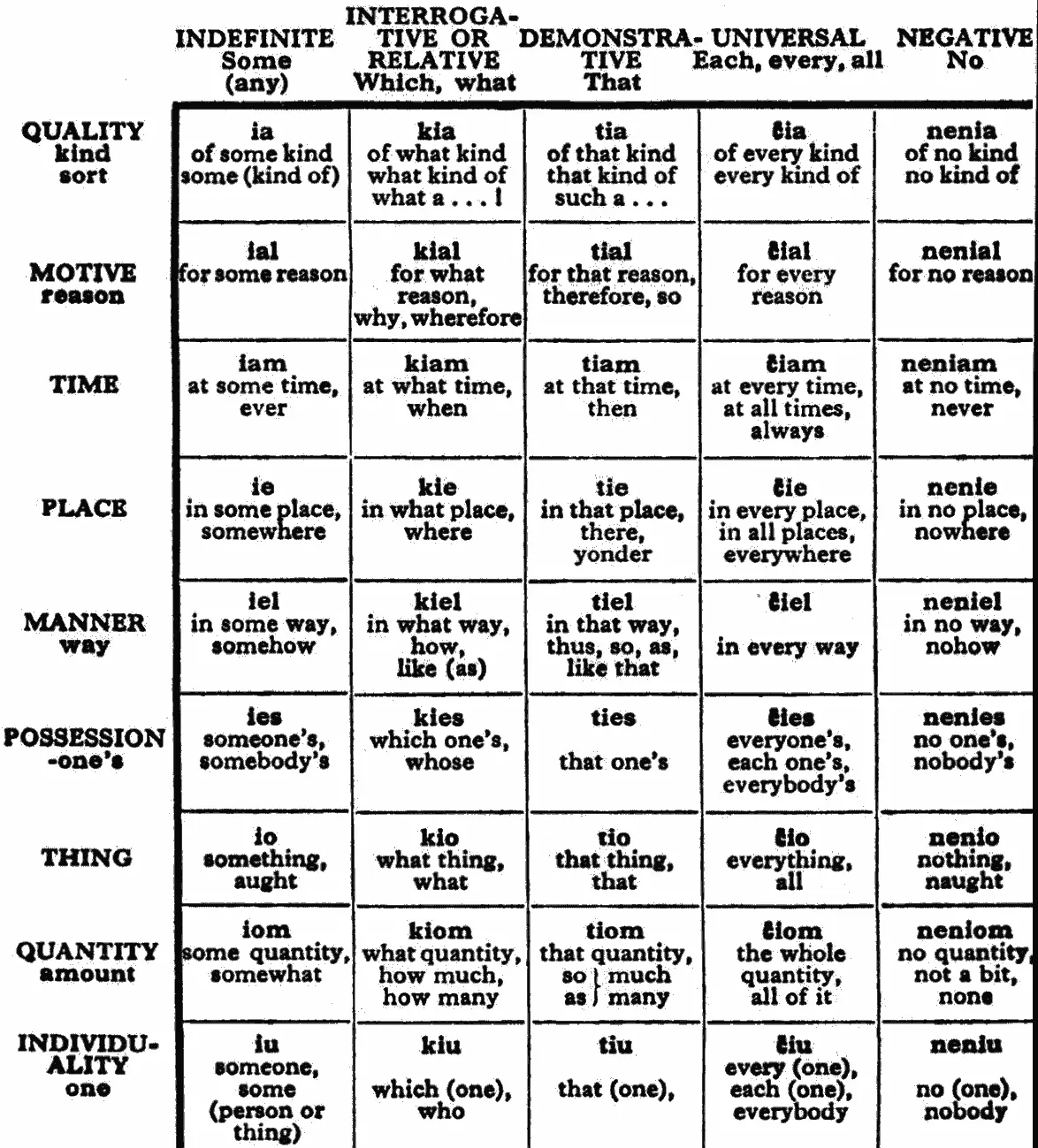
( Cifero rilatas al la samnumera paragrafo )
‑a, 126, 129, 186, 190
A, an , 6
Absolute construction, 1135
Accent, 4, 236
Читать дальше
